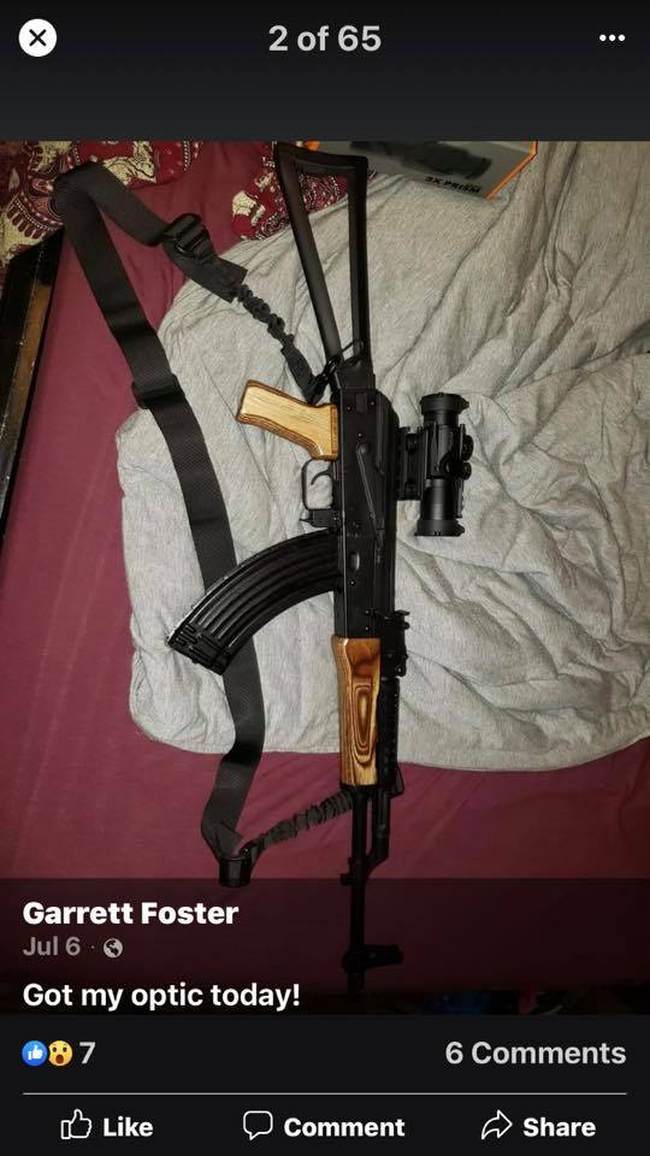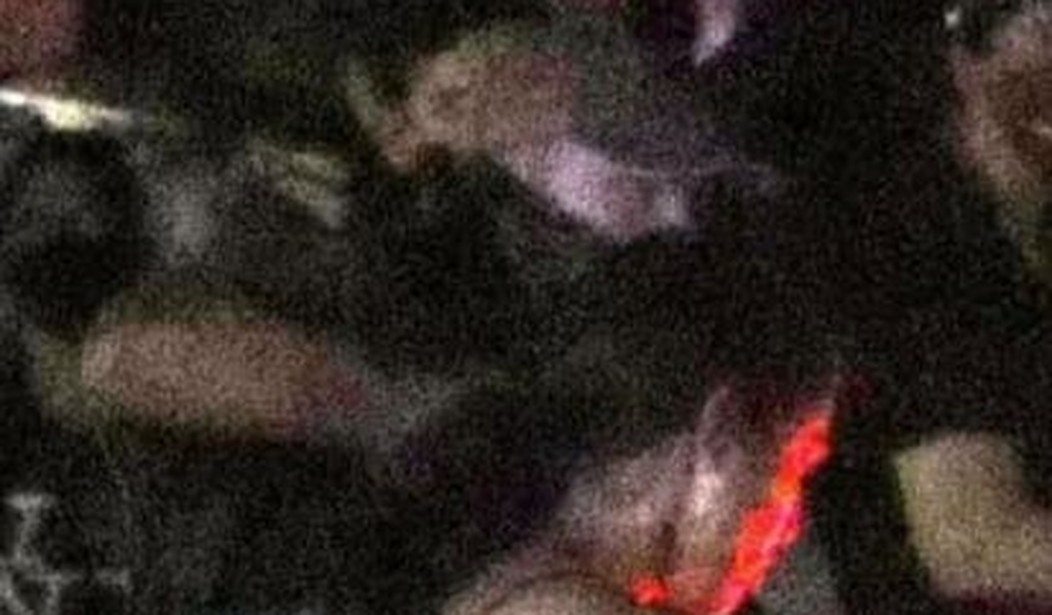This photo below appears to show Garrett Foster, 28, moments before he was shot and killed in Austin, Texas just before 10 PM Saturday night during a march/protest.
The photo clearly shows a few key things. Foster was armed and was holding his rifle as he approached the vehicle that night. According to the person who shot him and other witnesses, protesters surrounded and began beating on the car after making a right turn from 4th Street to Congress Ave.
Foster approached the car with the crowd and pointed his rifle at the driver.

Widely circulated photo captured moments before the fatal shooting at a BLM/antifa protest in Austin, Texas, July 25, 2020.
The rifle appears identical, as much as can be seen in the grainy photo, to the rifle in this photo Foster reportedly posted on social media earlier in July.

Social media photo posted by Garrett Foster, who was killed in a riot in Austin, Texas July 25, 2020. Photo from social media.
There were rumors over the weekend that the interview below occurred some days or even weeks earlier. The photo above and the video here would seem to refute that, as Foster is wearing the same clothing and carrying the same gun. The AK-47 in the photos and the video also appear to match.
Garrett Foster, the Black Lives Matter supporter who was shot and killed tonight in Austin, TX, was interviewed with his AK47.
— Ian Miles Cheong (@stillgray) July 26, 2020
Reports conflict regarding whether Foster fired his AK-47 or not. In this clip, three different gun sounds can be heard. That could indicate three different weapons fired, or the changing position of the guns or the camera, or the acoustics in that intersection.
According to early reports, at least two weapons were fired: the driver’s, and that of another protester who fired at the driver after Foster was shot.
After the shooting, the driver pulled away from the crowd and called police to report the shooting. Police detained, questioned, and eventually released the driver and the protester who fired as the car sped away. First responders attempted to resuscitate Foster on the scene, then transported him to Dell Seton Medical Center, where he was pronounced dead about an hour after the shooting.
Whether Foster fired or not may not matter in the end. Texas is a strong Castle Doctrine state. Texas law specifically includes vehicles.
On March 27, 2007, Governor Rick Perry signed S.B. 378 into law; it expanded Texans’ self-defense rights by no longer requiring a person to retreat while acting in self-defense. Texans were given the right to use force, including deadly force, to protect their homes, vehicles, and places of business or employment when an intruder was unlawfully entering or attempting to enter one of these locations. In addition, the use of force or deadly force became permissible if an actor was attempting to remove someone from the actor’s home, vehicle, place of business or employment by force.
Foster approached the car as part of the crowd he was marching with, with his rifle as protesters surrounded it and pounded on it with their hands and perhaps other objects. The photo appears to capture him with the gun muzzle lowered toward the ground, but that may be a mere instance before or after he raised it to point it at the vehicle. The driver may not have been able to see clearly exactly where the muzzle was pointed, and yet had a reasonable fear for their life.
The driver would have had no more than an instant to see the man approaching with the rifle, hear and feel the crowd pounding on the car, and react. Anyone who has followed the protests over the past two months would be aware that protesters have surrounded vehicles, pounded on them with fists and weapons, dragged people from cars, smashed car windows, and shot drivers as well. Austin’s protests have turned violent multiple times in recent weeks.
Additionally, the protest Saturday night had no permit from the city. The protesters hijacked the streets illegally. This is important both to the status of the protesters — they were not marching legally — and the driver — they had no reason to expect a legal march on the public thoroughfare, and had the legal right to be on that street at that time.
An actor’s belief that the use of force was immediately necessary is also presumed reasonable if the actor knew or had reason to believe that the person against whom the force was used unlawfully and with force removed, or was attempting to remove, the actor from the actor’s habitation, vehicle, or place of business or employment. In addition, an actor’s belief that the use of force was immediately necessary is presumed to be reasonable if the actor knew or had reason to believe that the person against whom the force was used was committing or attempting to commit aggravated kidnapping, murder, sexual assault, aggravated sexual assault, robbery, or aggravated robbery. However, the presumption of reasonableness is eliminated if the actor who used forced against a person provoked the person against whom force was used and was engaged in criminal activity other than a Class C misdemeanor or traffic offense at the time the force was used. Subsection (e) eliminates an actor’s duty to retreat before using force if the actor had a right to be present at a location, did not provoke the person against whom force was used, and was not engaged in criminal activity at the time the force was used. Subsection (f) prohibits a fact finder from considering whether an actor failed to retreat when deciding whether that actor reasonably believed that force was necessary.
Emphasis added. Some might argue that the driver “provoked” the marchers by attempting to drive through. The march was not permitted; therefore the driver had a legal right to be there, and driving there was not a provocation. Neither is sounding the horn since the marchers were occupying the same street the driver had the legal right to be on. The crowd had no more right to be there than the driver did. Sounding the horn is, among other things, a warning to get people in cars or on foot to move out of one’s way so that you do not harm them with your car.
The final sentence above would seem to weigh in the driver’s favor as well, as the district attorney weighs possible charges.









Join the conversation as a VIP Member